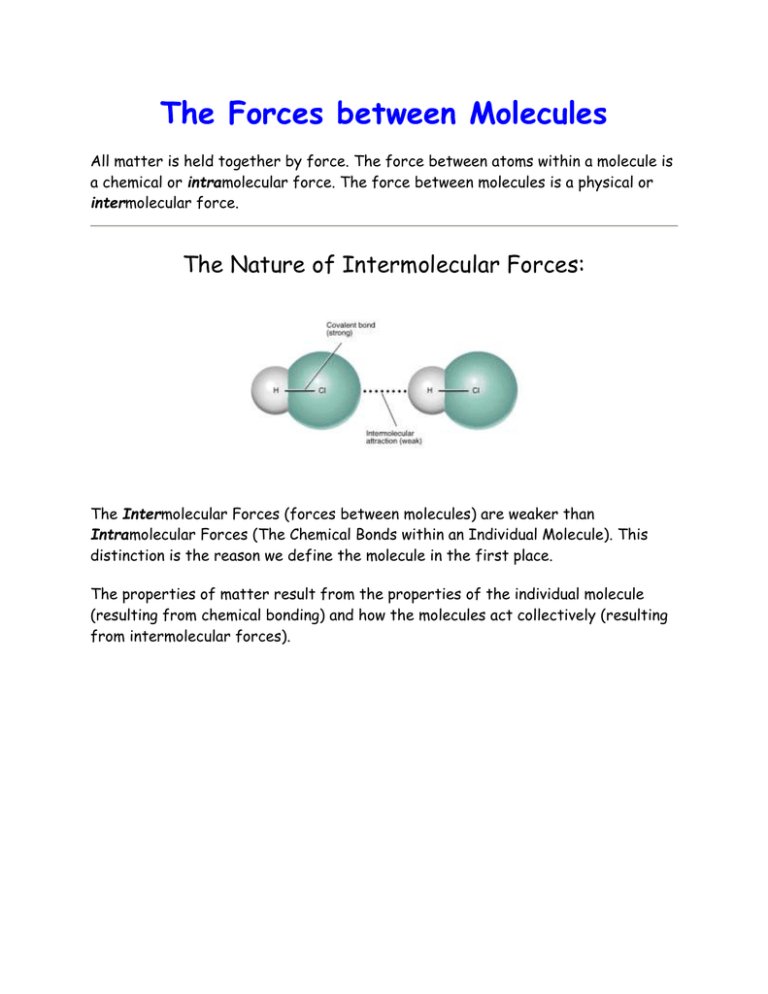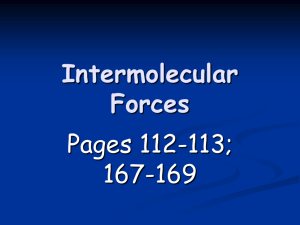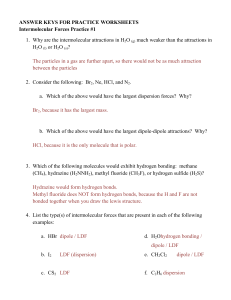Intermolecular Forces: Dipole, Dispersion, Hydrogen Bonding
advertisement

The Forces between Molecules All matter is held together by force. The force between atoms within a molecule is a chemical or intramolecular force. The force between molecules is a physical or intermolecular force. The Nature of Intermolecular Forces: The Intermolecular Forces (forces between molecules) are weaker than Intramolecular Forces (The Chemical Bonds within an Individual Molecule). This distinction is the reason we define the molecule in the first place. The properties of matter result from the properties of the individual molecule (resulting from chemical bonding) and how the molecules act collectively (resulting from intermolecular forces). Dipole-Dipole forces: exist between neutral polar molecules. Dispersion Forces London Dispersion forces result from fluctuations of charge. These forces are ubiquitous but are most important in systems that have no other types of molecular stickiness, like the rare gases. The rare gases may be liquified, and it is dispersion forces that hold the atoms together. The movement of the electrons, even in the He atom, cause an instantaneous dipole to be formed. This dipole, however fleeting, can induce a dipole in a neighboring atom, causing a force. This force is always attractive, but short range. Hydrogen Bonding The figure above shows the normal boiling point temperatures for several related substances. This boiling point diagram tells us about the intermolecular forces between a series of small hydrogen containing molecules. Look first at the Group 14 hydrides (bottom, black line), from CH4 through SnH4. The boiling points of these molecules increase with increasing mass, as one would expect. The group 16 hydrides (top, red line) do the same thing, with the notable exception of WATER! A special type of intermolecular force exists between water molecules called hydrogen bonding, which raises its boiling point significantly . Hydrogen is unique among the elements because it has a single electron which is also a valence electron. When this electron is hogged by another atom in a polar covalent bond, a significant fraction of the hydrogen nucleus becomes uncovered and the bare nucleus desperately seeks to be covered by electrons from other atoms (modesty?). Normally, hydrogen bonds only exist when bonded to Nitrogen, Oxygen, and Fluorine. Hydrogen bonding is very important in the function of proteins, as these interactions determine the way they fold (their shape), and this determines how they react in the cell. Fluorine hydrogen bonds are not found too often in biochemistry, but can be important in certain synthetic materials properties.










